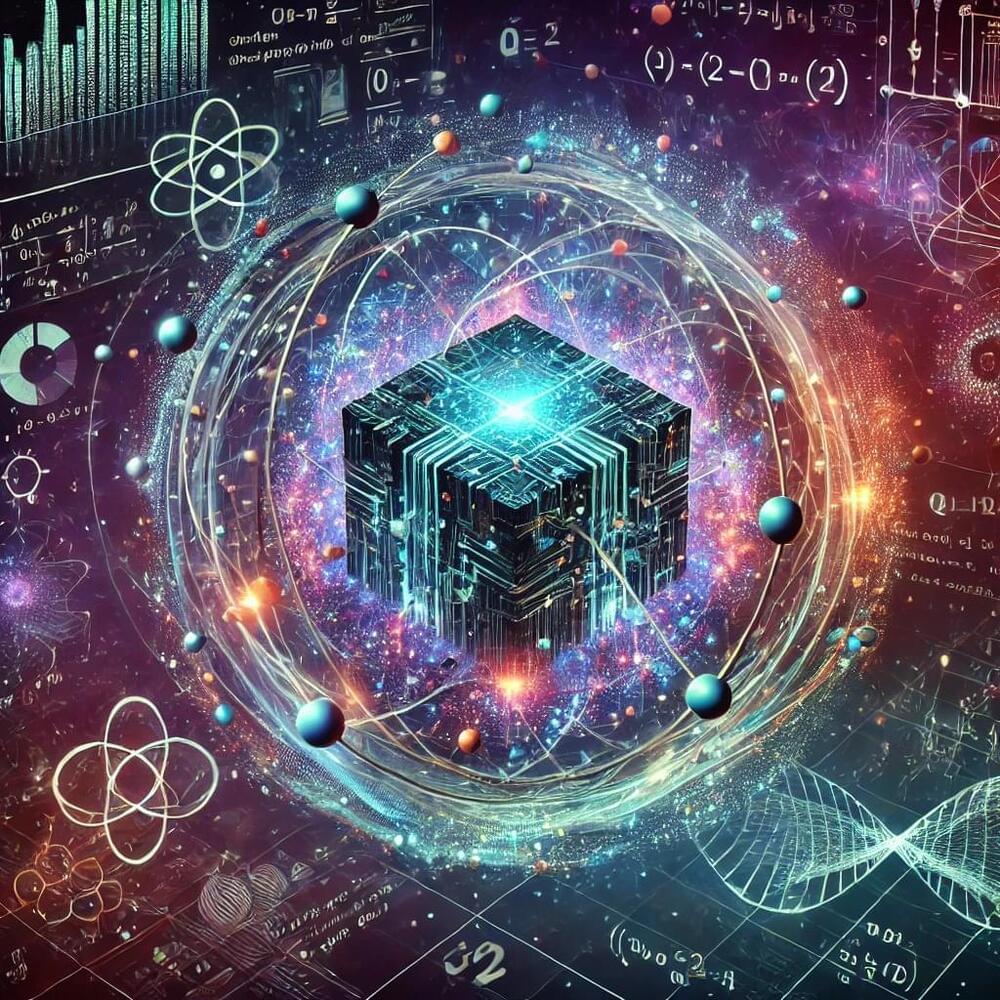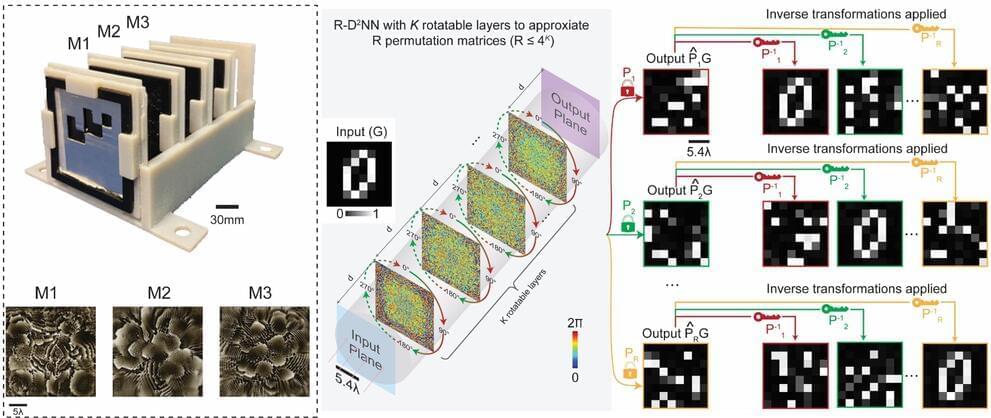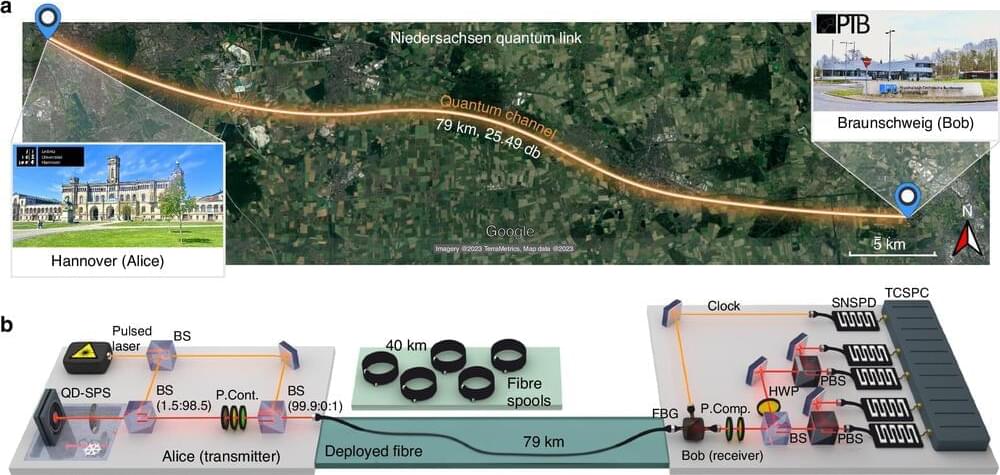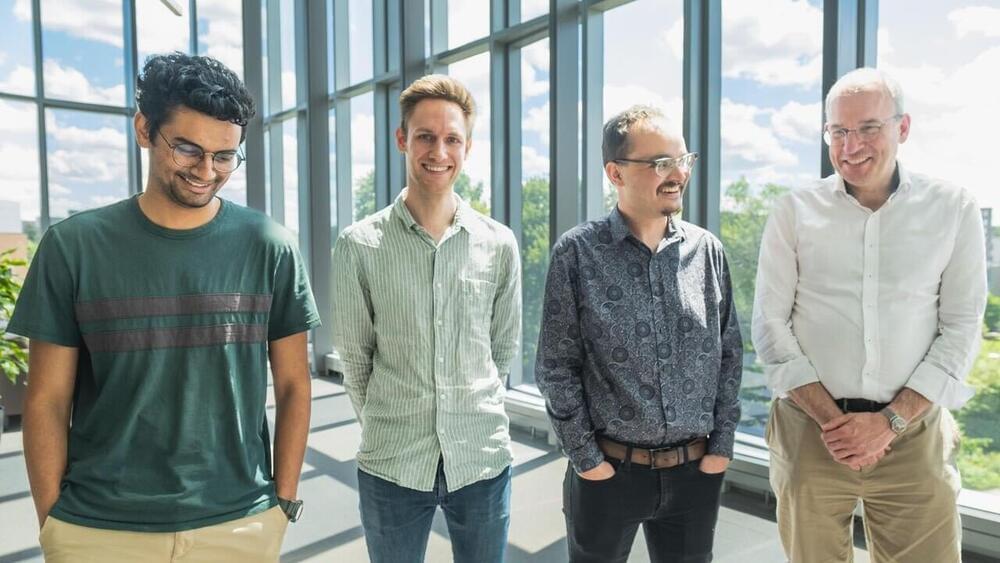The power of quantum computing drives a desperate need for quantum encryption. This megatrend is creating a multi-billion-dollar security market.



Engineers at the University of California, Los Angeles (UCLA) have unveiled a major advancement in optical computing technology that promises to enhance data processing and encryption. The work is published in the journal Laser & Photonics Reviews.
This innovative work, led by Professor Aydogan Ozcan and his team, showcases a reconfigurable diffractive optical network capable of executing high-dimensional permutation operations, offering a significant leap forward in telecommunications and data security applications.
Permutation operations, essential for various applications, including telecommunications and encryption, have traditionally relied on electronic hardware. However, the UCLA team’s advancement uses all-optical diffractive computing to perform these operations in a multiplexed manner, significantly improving efficiency and scalability.

Europol is proposing solutions to avoid challenges posed by privacy-enhancing technologies in Home Routing that hinder law enforcement’s ability to intercept communications during criminal investigations.
The agency has previously highlighted in its Digital Challenges series that law enforcement problem of end-to-end encryption on communication platforms is a hurdle when it comes to collecting admissible evidence.

Researchers have developed a breakthrough method for quantum information transmission using light particles called qudits, which utilize the spatial mode and polarization properties to enable faster, more secure data transfer and increased resistance to errors.
This technology could greatly enhance the capabilities of a quantum internet, providing long-distance, secure communication, and leading to the development of powerful quantum computers and unbreakable encryption.
Scientists have made a significant breakthrough in creating a new method for transmitting quantum information using particles of light called qudits. These qudits promise a future quantum internet that is both secure and powerful.

Conventional encryption methods rely on complex mathematical algorithms and the limits of current computing power. However, with the rise of quantum computers, these methods are becoming increasingly vulnerable, necessitating quantum key distribution (QKD).
QKD is a technology that leverages the unique properties of quantum physics to secure data transmission. This method has been continuously optimized over the years, but establishing large networks has been challenging due to the limitations of existing quantum light sources.
In a new article published in Light: Science & Applications, a team of scientists in Germany have achieved the first intercity QKD experiment with a deterministic single-photon source, revolutionizing how we protect our confidential information from cyber threats.

Accurate models of real-world scenarios are important for bringing theoretical and experimental research together in meaningful ways. Creating these realistic computer models, however, is a very large undertaking. Significant amounts of data, code, and expertise across a wide range of intricate areas are needed to create useful and comprehensive software.
Dr. Norbert Lütkenhaus, executive director of the Institute for Quantum Computing (IQC) and a professor in the University of Waterloo’s Department of Physics and Astronomy, alongside his research group, have spent the last several years developing accurate software models for research in quantum key distribution (QKD).
QKD is a process for cryptography that harnesses fundamental principles of quantum mechanics to exchange secret keys, which can then be used to ensure secure communication.

Researchers have developed a novel mechanical computer inspired by kirigami, utilizing interconnected polymer cubes for data storage without electronics.
This system allows for multiple stable states, enhancing binary computing to potentially include additional data states. The design, leveraging the principles of kirigami, enables complex data storage and computation structures with practical applications in mechanical encryption and haptic systems.
Mechanical Computing Innovation

New “metaholograms” could transform AR/VR technologies by enabling crosstalk-free, high-fidelity image projection with vastly increased information capacity.
Researchers have developed a new type of holograms, known as “metaholograms,” capable of projecting multiple high-fidelity images free of crosstalk. This innovation opens doors to advanced applications in virtual and augmented reality (AR/VR) displays, data storage, and image encryption.
Metaholograms offer several advantages over traditional holograms, including broader operational bandwidth, higher imaging resolution, wider viewing angle, and more compact size. However, a major challenge for metaholograms has been their limited information capacity which only allows them to project a few independent images. Existing methods typically can provide a small number of display channels and often suffer from inter-channel crosstalk during image projections.

This innovation has the potential to significantly improve AR/VR displays by enabling the projection of more complex and realistic scenes. It also holds promise for applications in image encryption, where the information is encoded into multiple holographic channels for enhanced security.
The research is a significant step forward in developing high-performance metaholograms with a vastly increased information capacity. This study paves the way for exciting new possibilities in various fields, from advanced displays to information encryption and information storage.

“Recall uses Copilot+ PC advanced processing capabilities to take images of your active screen every few seconds,” Microsoft says on its website. “The snapshots are encrypted and saved on your PC’s hard drive. You can use Recall to locate the content you have viewed on your PC using search or on a timeline bar that allows you to scroll through your snapshots.”
By performing a Recall action, users can access a snapshot from a specific time period, providing context for the event or moment they are searching for. It also allows users to search through teleconference meetings they’ve participated in and videos watched using an AI-powered feature that transcribes and translates speech.
At first glance, the Recall feature seems like it may set the stage for potential gross violations of user privacy. Despite reassurances from Microsoft, that impression persists for second and third glances as well. For example, someone with access to your Windows account could potentially use Recall to see everything you’ve been doing recently on your PC, which might extend beyond the embarrassing implications of pornography viewing and actually threaten the lives of journalists or perceived enemies of the state.